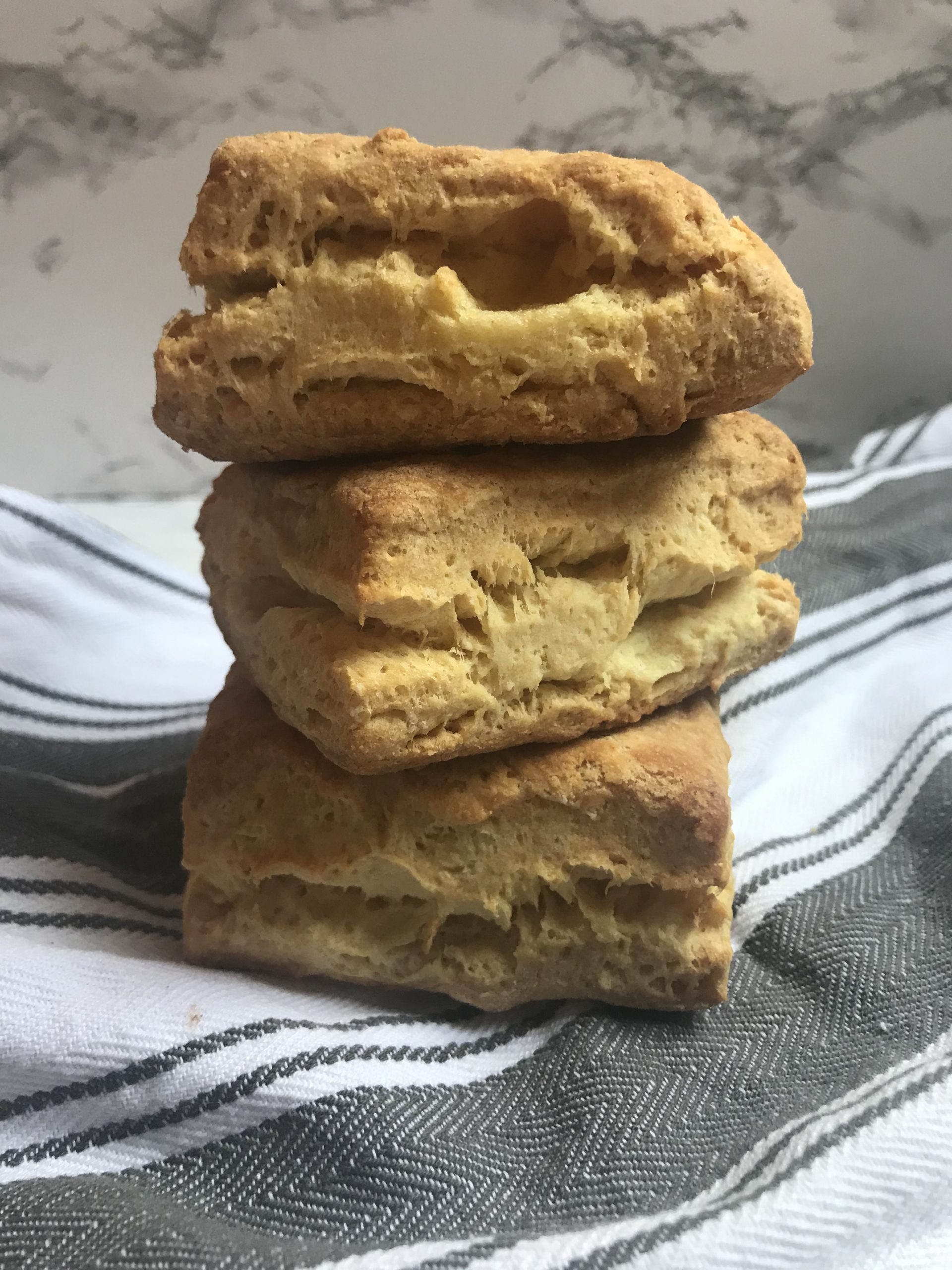With this recipe for vegan biscuits, you only need one batch for everyone to enjoy. No one will miss the gluten or dairy in these biscuits!
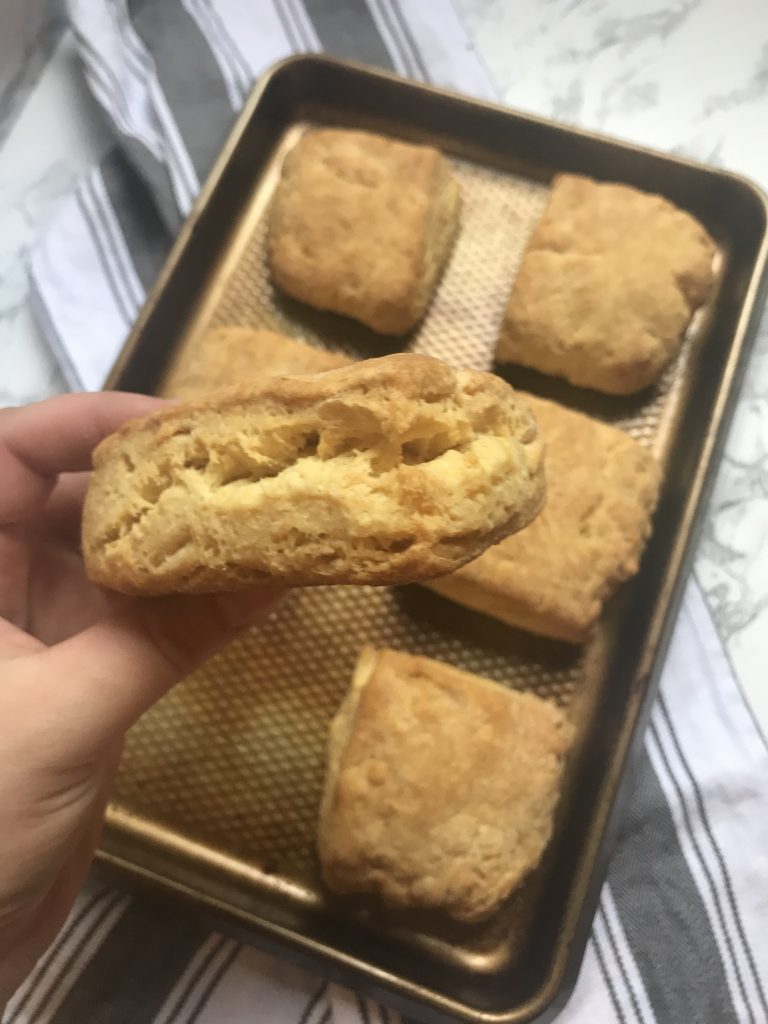
Biscuits are a great addition to your breakfast or make a great dinner roll. I’ve been making them gluten free for a while now and enjoying them, but I wanted to play around with plant butter and making vegan biscuits. I was actually shocked at how good they turned out! I’ll highlight the specific ingredients I used below. If you can’t eat dairy, then you can definitely still enjoy these biscuits! I adapted this recipe, and adjusted the recipe to work best with plant butter and milk. Let’s talk a little bit about what biscuit dough even is.
Biscuit Dough
Biscuit dough is a crumbly dough that relies on butter or other fat to stay solid in the flour mixture. You want the fat to be cold, and you want to kneed the dough as little as possible so the butter or fat doesn’t melt. We want the butter to melt in the oven when the biscuits bake because it helps make flakey layers.
In buttermilk biscuits, there is also some rise from the acid-base reaction that happens between the acidic buttermilk and the basic baking soda and baking powder. If you’ve ever played with baking soda and vinegar you know what happens when the two mix! You get carbon dioxide bubbles. When this happens, the air bubbles get trapped in the dough and provide some rise. In this case we’re going to acidify our plant milk with lemon juice to get the same effect.
Special Ingredients for Vegan Biscuits
Gluten Free Flour- You need a good gluten free flour, and if you’ve been around you know how I love Cup4Cup! Their regular flour contains milk powder, but they have a new dairy-free blend I want to try. Another one of my go-to flours is King Arthur which is vegan and fortified.
Xanthan Gum- Xanthan gum is a bacterial byproduct, and it helps stabilize gluten free baked goods. There is some controversy about added gums in food. In large amounts xanthan gum can have a laxative effects, so it’s safe for most people but may affect some people worse. Overall, I add this to my baking to get a little more lift, but I have also baked without it and things still turn out. Bottom line, if you don’t want to buy it or don’t want to eat it, you can leave it out.
Vegan Butter- I have tested this recipe with Califia’s European-style butter and Flora’s plant butter and both have turned out really well. I usually use a butter with a high-fat content, so I really liked the texture of the Califia butter for these vegan biscuits. The flora butter ones needed a little more flour, so you may have to add more flour depending on the texture of your plant butter.
Plant Milk – I think that any unsweetened plant milk would work, but again I prefer a higher fat and creamier option. I used Chobani oat milk, and I think soy milk would work well too.
Of course you can use this recipe with dairy butter and buttermilk too if you don’t need a dairy-free recipe. These biscuits would also be great with your Thanksgiving dinner!
Steps of Making the Dough
Once you weigh out the dry ingredients, you want to add the frozen butter chopped up into about 1 inch pieces. You can use a food processor or a pastry cutter if you have one. Honestly, I just used my hands to squish the butter into the flour and break it up into pieces.
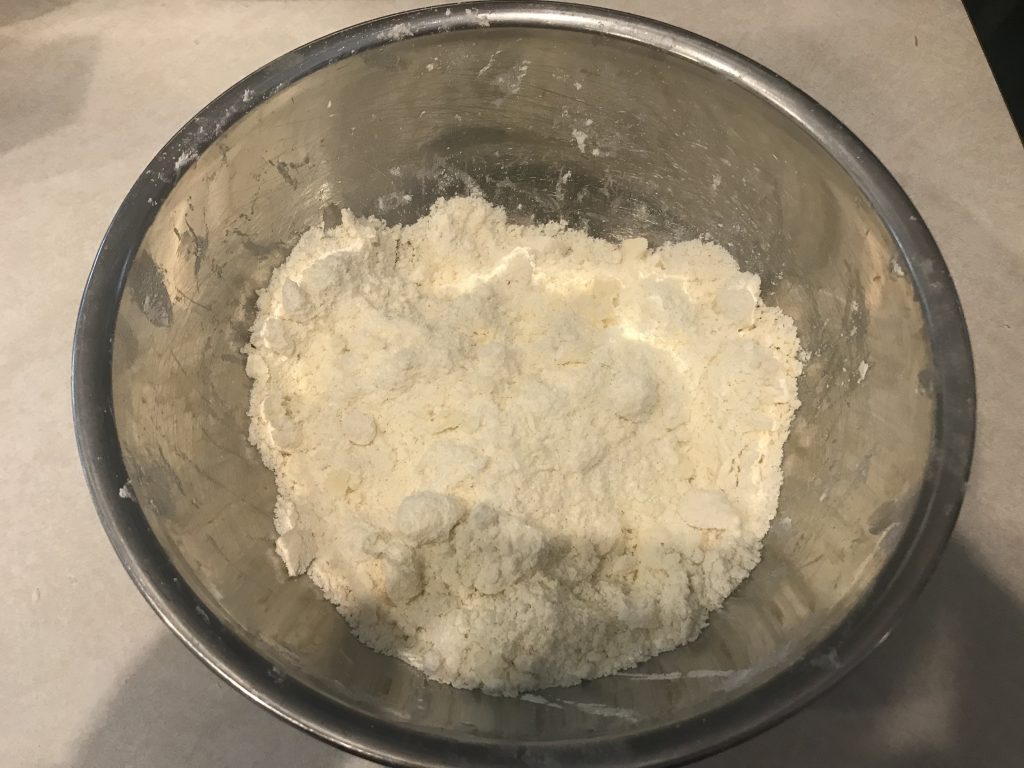
You’ve reached the right consistency when the dough is sandy and crumbly, but holds its shape when you squeeze it. It will be very crumbly before the wet ingredients are added, but shouldn’t just fall apart in your hand.

When you add in the wet ingredients, it will be very wet. As you mix the dough, you want it to come together into a somewhat smooth ball. If it is too wet, slowly add more flour until the dough just comes together. Depending on the type of plant butter you use, you may need more flour. I like to start mixing with a fork and move to my hands as it comes together.
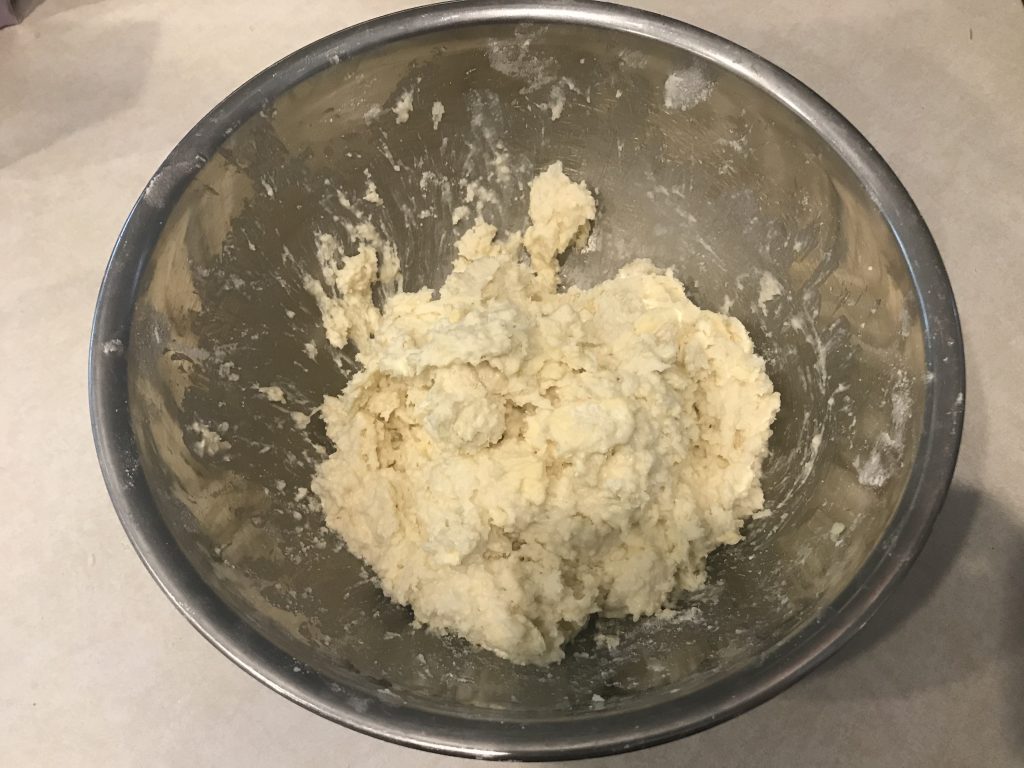
When your dough comes into a mostly smooth ball, you’ve go the right consisitnacy. Remember that you’ll be adding more flour as you flour the work surface, so you don’t want to over do it at this stage.
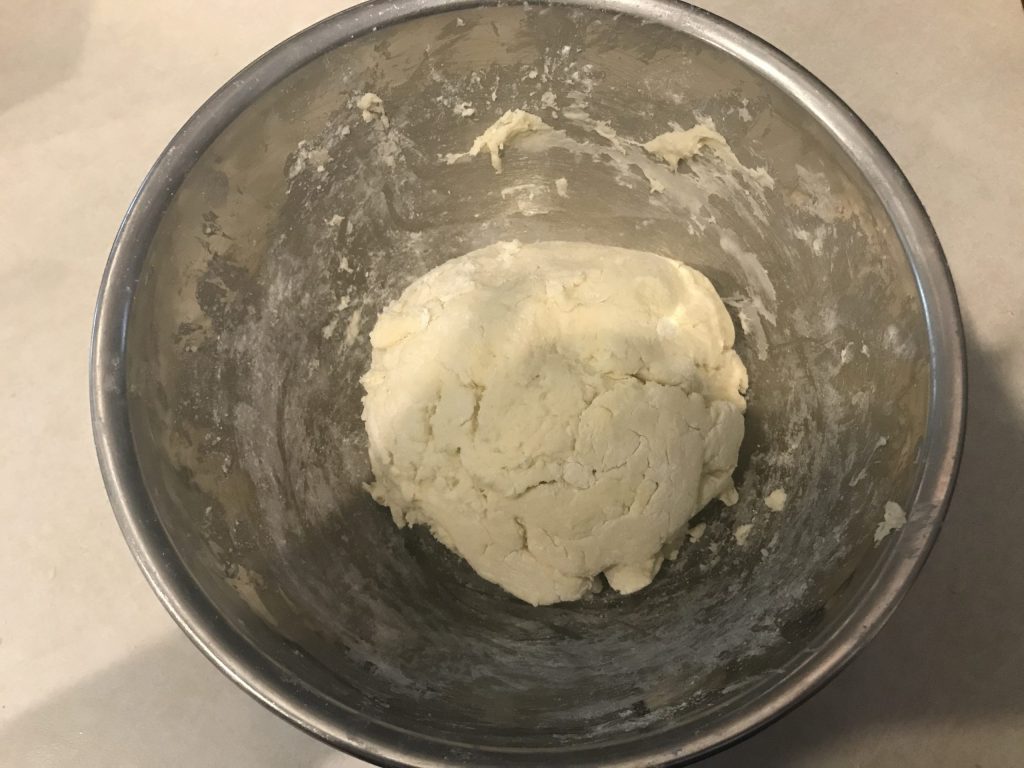
You should be able to roll out the dough or use your hands to shape the dough. You don’t want to overwork the dough because the butter will melt. The chucks of butter are part of what makes the biscuits flaky. Folding the dough into thirds, rolling it out, and then folding in thirds in the other direction also makes great layers!
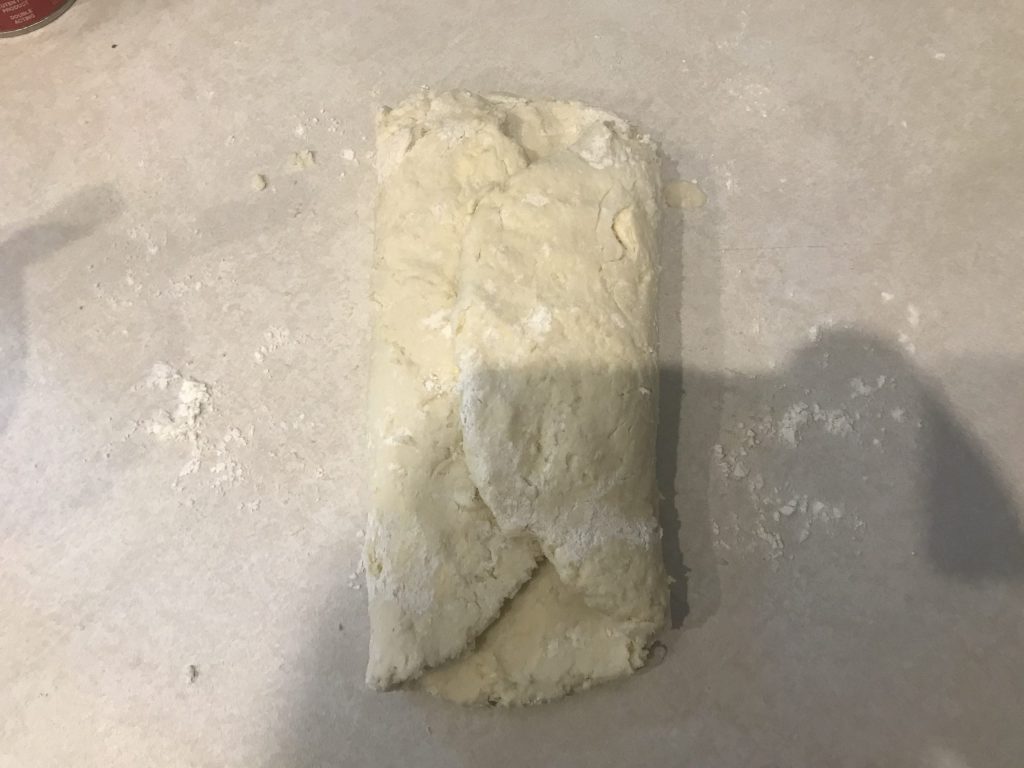
I made a half recipe when I took these pictures, so I ended up with 6 large biscuits. The recipe below will make about 12 large biscuits, but you can cut them to whatever size you’d like. You can also use a circle cutter to make round biscuits, but it’s more work. Take the scraps after cutting and push them back together. Do not reroll the dough or the texture will change. Then brush the tops with extra melted butter and bake. Get the full recipe below! Need some gravy to go with these? Check out this vegan gravy recipe here.
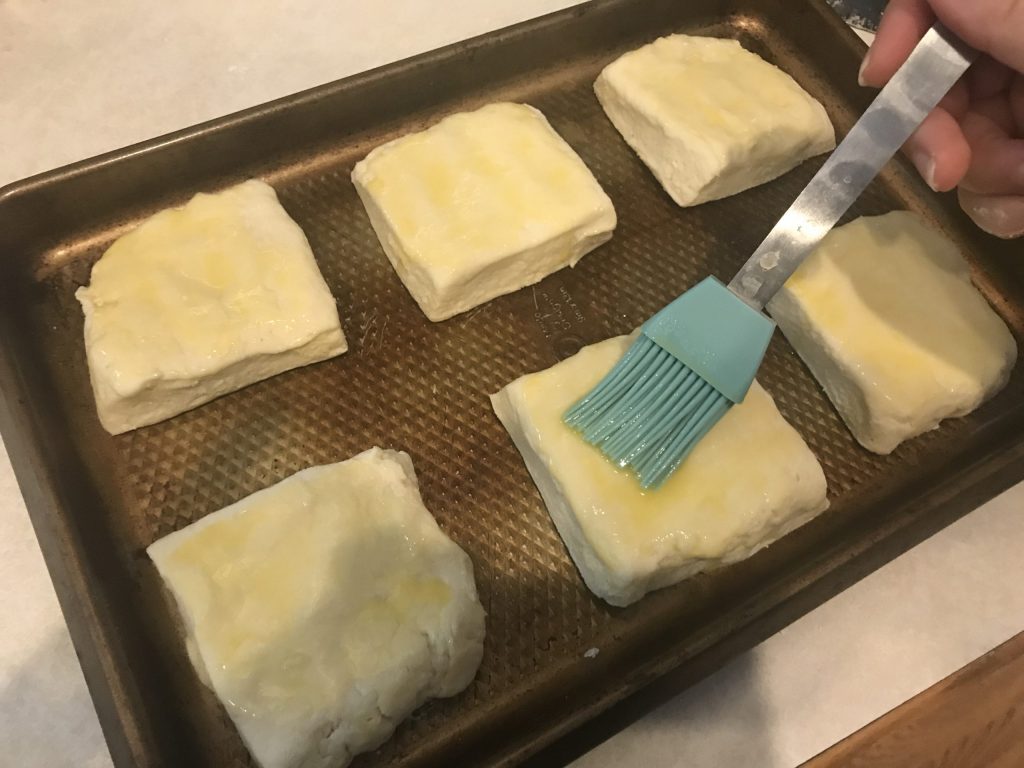

Vegan Biscuits
Ingredients
- 610 g flour plus more for adjusting texture
- 10 g baking soda
- 4 g baking powder
- 6 g salt
- 10 g sugar
- 230+2 g frozen plant butter divided
- 14 oz. plant milk
- 1 tbsp lemon juice
Instructions
- Preheat the oven to 425°F.
- In a bowl, weigh out the flour, baking soda, baking powder, salt, and sugar. Stir to combine.
- In a measuring cup, add the plant milk and lemon juice. Set aside to let the milk acidify.
- In a food processor or by hand, add the chopped plant butter. Pulse the food processor until the butter is incorporated. If using a pastry cutter, fork or your fingers, chop the butter into the flour until combined. The texture should be crumbly, but hold its shape when squeezed in your hand.
- Return the mixture from the food processor back into the bowl, and make a well in the middle. Pour the milk into the well, and use a fork to slowly mix the flour into the milk . When the dough is shaggy, turn out the dough onto a floured surface, and kneed until just combined.
- Depending on the type of butter you use, you may need to add more flour. If the dough is too sticky, add more flour slowly until it forms into a ball and is no longer sticky. You should be able to roll out the dough on a floured surface without it falling apart.
- Roll the dough into a rough rectangle, and fold the dough in thirds. Roll the folded dough out again. Again, fold in thirds in the other direction and roll out to about 1 inch thickness.
- Use a bench cutter to cut the dough into squares. You can also use a round cutter, but do not re-kneed the dough between cuts. Just push the dough back together and cut again.
- Place the biscuits on a baking sheet. Melt the remaining about 2g of plant butter and brush on top of the biscuits. Bake for 15 minutes and serve warm.
Notes


